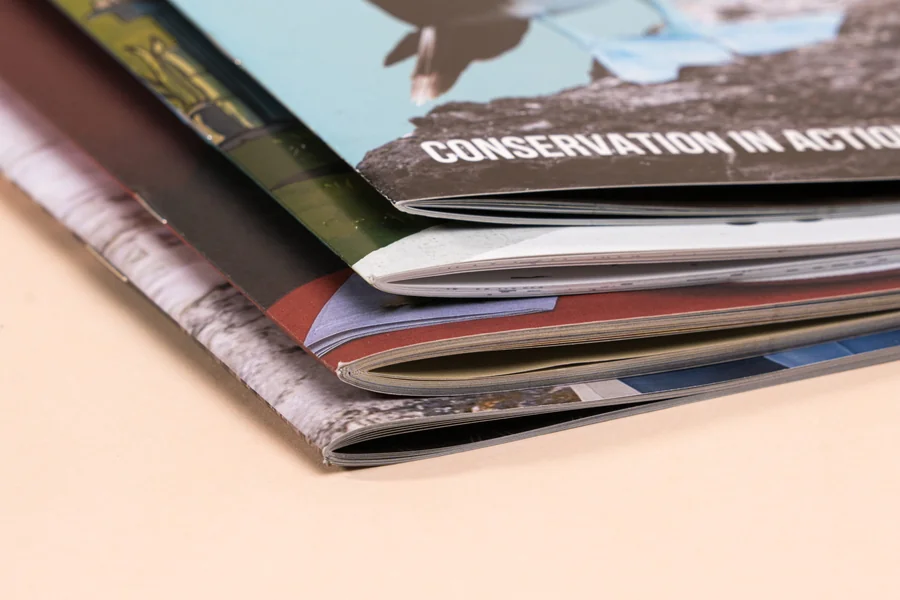Exploring Size Versatility with Saddle Stitched Booklets
Why Size Matters in Booklet Projects
The size of your saddle-stitched booklet is more than an aesthetic decision—it shapes the user’s interaction with your content. Booklet dimensions influence how readers absorb information, how easily the piece fits into a mailbox or bag, and its perceived value. Overly large booklets can be cumbersome and costly, while tiny formats might not deliver your message effectively. Selecting the right size helps ensure the booklet looks professional and serves its purpose, whether for marketing, manuals, event programs, or educational guides. Companies adopting Printivity’s stapled binding booklets can tap into a spectrum of sizes, allowing creative flexibility without sacrificing print quality or efficiency.
Recent trends highlight a resurgence in tactile marketing. According to Printing News, businesses realize that physically engaging print pieces like booklets can achieve higher response rates than digital campaigns alone. Optimizing booklet size plays a large role in ensuring these pieces are noticed, read, and retained.
The Range of Popular Saddle-Stitched Booklet Sizes
One of the standout features of saddle-stitched booklets is the expansive range of sizes available. Standard sizes such as 8.5 x 11 inches (letter), 5.5 x 8.5 inches (half-letter), and 6 x 9 inches cater to most informational, marketing, and event needs. Publishers often select a standard size when content volume or distribution cost is a primary concern—letter-size booklets, for example, offer a familiar reading experience and plenty of design space.
On the other hand, custom sizes and shapes can help brands differentiate themselves. Mini booklets, landscape layouts, or oversized formats create visual interest and deliver a unique tactile experience. The production process for saddle-stitching adapts readily to these options, meaning brands can develop eye-catching materials such as creative lookbooks or compact instruction manuals. Examples seen in annual reports, product catalogs, and event guides demonstrate the creative potential that custom sizing can offer.
Factors That Influence Size Choices
The optimal booklet size depends on several factors: content type, intended use, distribution method, and target audience. A robust catalog or technical manual typically requires a larger size to accommodate visuals and detailed information, while program booklets for events benefit from more compact, portable formats. The number of pages, paper weight, and desired finish will influence the overall dimension for best results.
Audience demographics matter. Corporate clients may prefer substantial, full-sized booklets that project authority, while creatives or educators might opt for smaller, visually bold pieces. The distribution method—mail versus handout versus in-package inclusion—dictates the size, as mailing standards and shipping costs place natural boundaries on what’s practical. Carefully balancing these considerations leads to more effective, impactful campaigns.
Advanced Customization for Brand Consistency
Customizing booklet size contributes to a cohesive brand image. Marketers are moving away from generic templates in favor of tailored formats and designs that echo company identity. When all company literature—brochures, catalogs, reports—is unified by size, color scheme, and finish, the result is a polished and trustworthy message. Integrating custom sizes distinguishes materials at trade shows, sales pitches, or public events.
Cutting-edge design also includes specialized binding, fold-outs, die-cuts, or paper stocks, enhancing form and function. Variable data printing allows for region-specific content or targeted offers per booklet. As Ad Age discussed, these personalized tactics deliver higher engagement, nurturing new prospects and existing clients through consistent, thoughtful branding.
Integrating Print and Digital Elements
Today’s most successful saddle-stitched booklets blur the line between print and digital. QR codes, unique URLs, and augmented reality content can be embedded directly into any size booklet, connecting tactile experiences to online destinations. This hybrid approach lets marketers track engagement, direct customers to updated content, or prompt social sharing, adding a layer of interactivity and enabling ROI measurement.
Size directly affects the placement and prominence of digital integration. Larger booklets may dedicate whole pages to interactive features, while compact versions use their limited space strategically, placing CTAs and scannable codes where they won’t be missed. Harmonizing print and digital strengthens brand presence and keeps campaigns agile in a fast-evolving media landscape.
Sustainability and Responsible Printing Options
Modern consumers expect brands to act with environmental consideration, and small booklet size choices can reduce paper waste and carbon footprint. Printing on recycled or responsibly sourced paper, using soy-based inks, or adapting booklet dimensions to minimize offcuts are practical strategies for sustainability. Even modest booklets can feel premium with eco-friendly finishes and thoughtful design.
According to Forbes, more than half of consumers say they are influenced by a company’s sustainability practices when making buying decisions. Communicating these values directly within the booklet—especially on the inside cover or back—fosters trust and appeals to environmentally aware audiences.
Best Practices for Design and Distribution
Getting the most from saddle-stitched booklets means more than choosing a catchy format—it takes careful planning from layout to final delivery. Prioritizing legible fonts, logical information flow, and appropriate image scaling is easier when the size complements the content. Bleeds, margins, and print-safe areas should be checked to ensure professional results. Proofreading and test prints for each new size and layout are essential for quality assurance.
For distributed materials, using protective mailers, clear labeling, and choosing sizes that conform to postal regulations ensures safe, affordable delivery. At events, right-sized booklets avoid clutter and encourage attendees to keep and revisit your piece. Tracking responses via digital elements provides valuable data for refining future booklet projects, creating a continuous improvement cycle.
Key Takeaways for Booklet Success
The flexibility of saddle-stitching enables businesses and organizations to create booklets in virtually any size or shape to meet a wide array of marketing and informational goals. Strategic choices regarding dimensions, content, and integration of sustainable or digital elements set the top campaigns apart. Marketers turn simple booklets into memorable, high-impact touchpoints that deliver real-world results by focusing on audience needs, thoughtful customization, and robust design.







